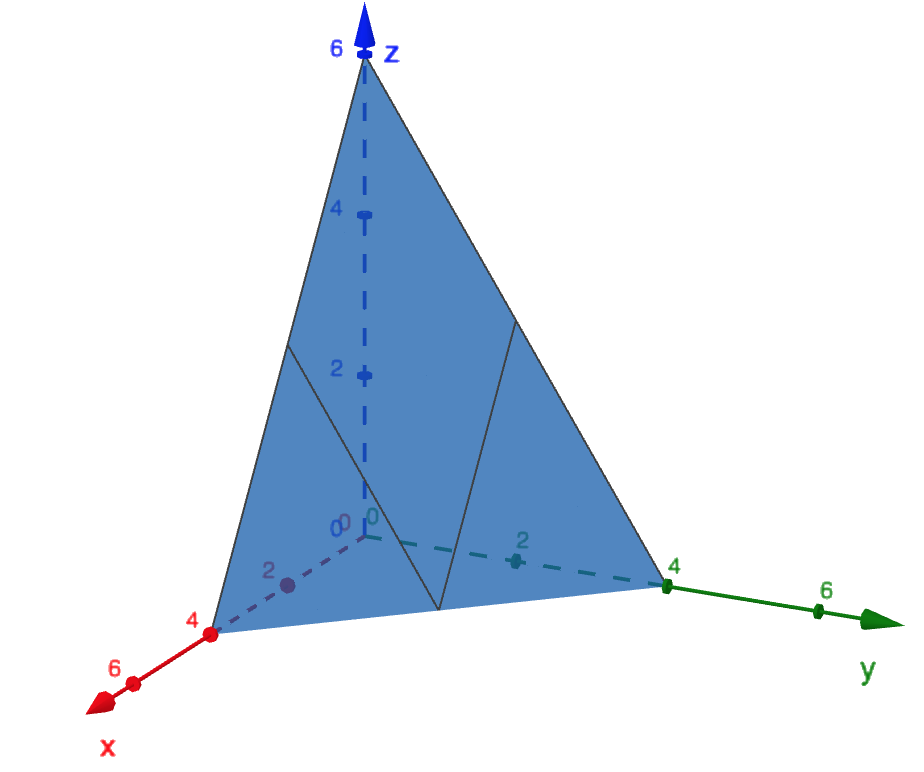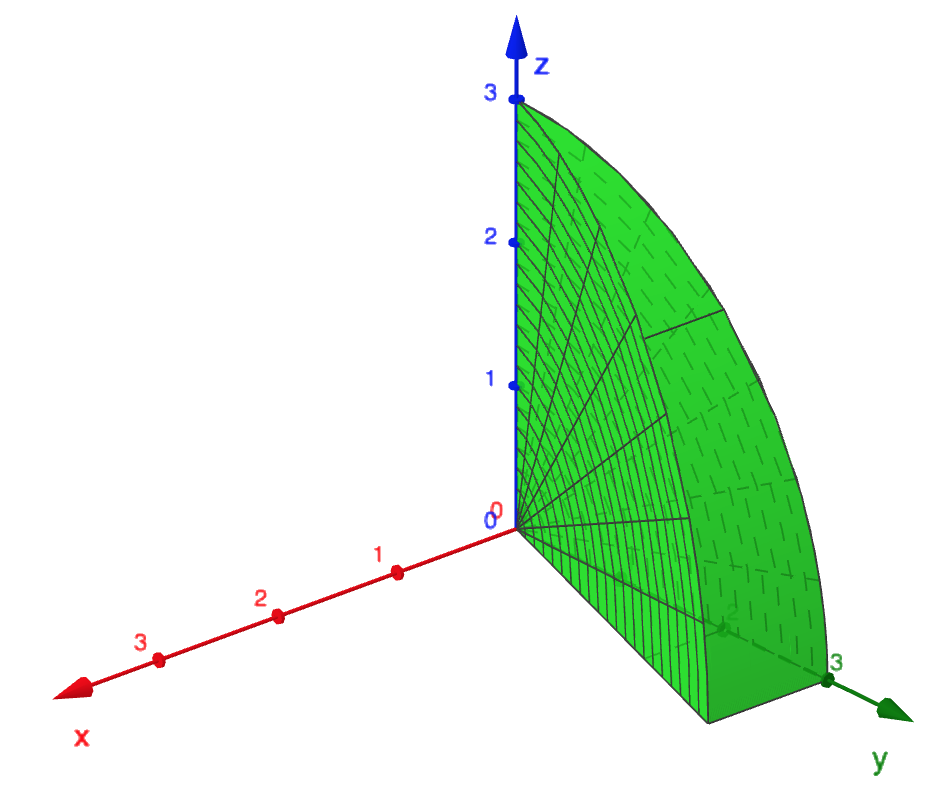Objectives:
- 1.
- Be comfortable setting up and computing triple integrals in Cartesian coordinates.
- 2.
- Understand what a triple integral represents geometrically.
- 3.
- Know what the triple integral of represents.
Recap Video
Here is a video highlights the main points of the section.
_
Example Video
Here is an example of setting up bounds for a triple integral in Cartesian coordinates.
Problems
Let be the filled in tetrahedron with vertices , , , and . Find the volume of .


To find the volume, our integrand will be . For the region: three of
the faces of the tetrahedron are the planes , , . The last one is the
plane
If we want to set this integral up in first, we must fix and and see what is
doing. For this region, we see that moves from to the tilted plane. The “”
integral will therefore have bounds:
To get the and bounds, we now project this region into the -plane. This
will be a triangle with vertices
We now set this integral up in and . For example, we want to integrate with
respect to next, the bounds for will be
and finally the bounds for will be
Thus, the integral will become
It evaluates to .
If and is the region given by , , and , evaluate . 

The region is shown above. We can try setting this up with first. If we do
that, then we see that
Projecting into the -plane gives us a triangle bounded by , , and . Setting
up a double integral over this triangle in the order would give the
bounds
Thus, we get a triple integral which looks like
Evaluating this gives an answer of .
Set up the triple integral from the previous problem with first and then
separately with first.
- If we do first, then we would have
- If we were to do first, we would get
If and is the region in the first quadrant bounded by , , , and , then .
If we
do first, then goes from to . In the -plane, the region is bounded by , , and .
So the triple integral should be
The integral of a function over the region bounded by and in the order has
setup
To get the bounds, solve for in the cones equation to get , so will go from
to . We now have to project onto the -plane. We know is one of the bounds of
our projected region. To get the others, we find the intersection of the
two bounds, i.e. . This gives . So we have the region in the -plane
bounded by , , and . This is easiest in the order , and we get and
.